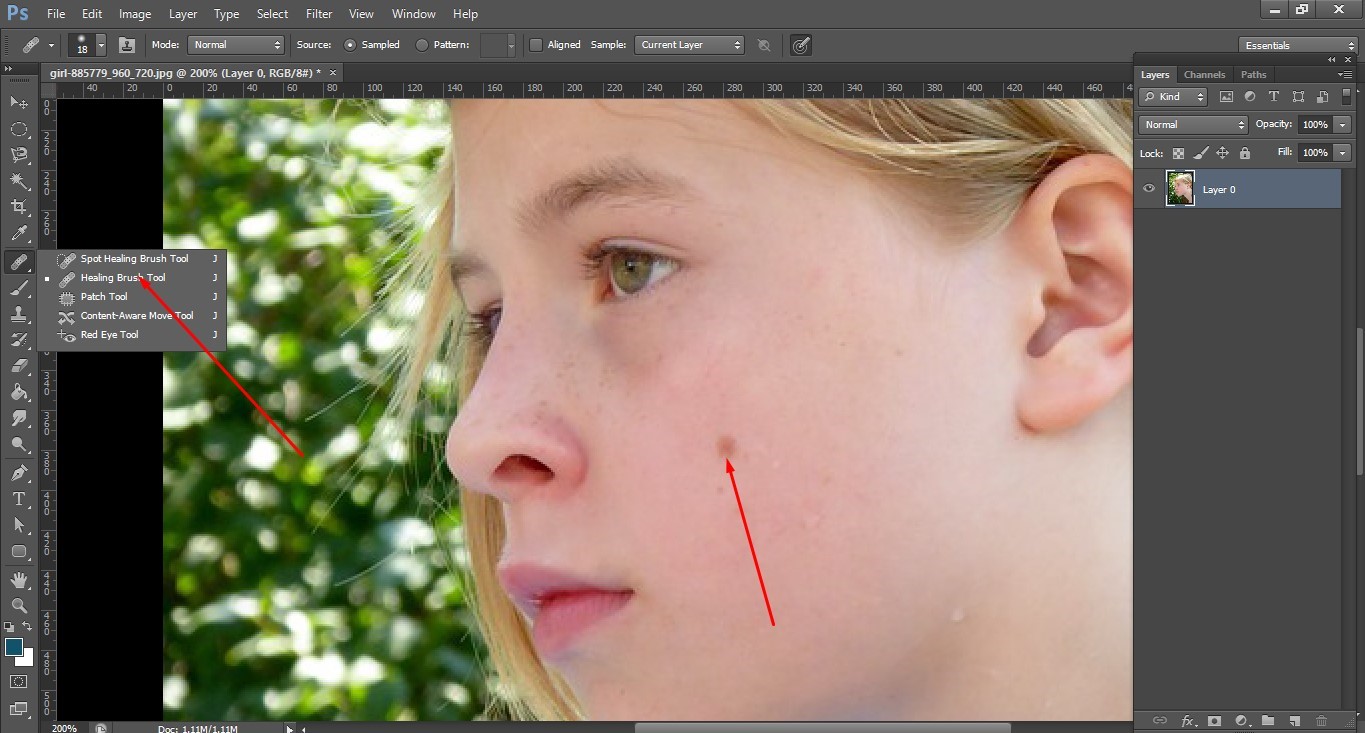

The Size, Hardness and Spacing may be adjusted using the sliders in the upper half of the fly out menu. This option is the same as the Healing Brush. There are no default brush presets for the Spot Healing Brush, but if you decide to create some, the presets may be accessed here. The first icon on the far left of the Option Bar is for Brush Presets. The Spot Healing Brush is most predictable in areas of broad consistent texture, like studio backgrounds or the sky.

You can see that with the Spot Healing Brush Photoshop interpreted the squares into the retouching, attempting to disguise the artwork using texture as well as color and value.īecause the user doesn’t get to choose what is used and Photoshop doesn’t know what the image should look like, the results may or may not be desirable when working in areas that have a variety of shapes and textures. The top row illustrations show how the Healing Brush works when the chosen Source is the plain white background, using different brush sizes. The samples on the bottom were created using the Spot Healing Brush with similar brush size selections. Instead, the Spot Healing Brush looks outside the brushwork, analyzes the shapes there and interprets them into the retouching along with colors and values – with varying degrees of success based upon the data in the surrounding areas. The Healing Brush allows the user to choose a particular Source to transfer. However, the tools sample texture differently. Both tools average and match the destination surrounding colors and values for easy retouching. The Spot Healing Brush and the Healing Brush both allow the user to replace unwanted items with a preferred texture, color and value. The Spot Healing Brush is located in the Vertical Tool Bar, nested with the Healing Brush, the Patch Tool, The Content-Aware Move Tool and the Red Eye Tool. More from our Popular Tools in Photoshop series:


 0 kommentar(er)
0 kommentar(er)
